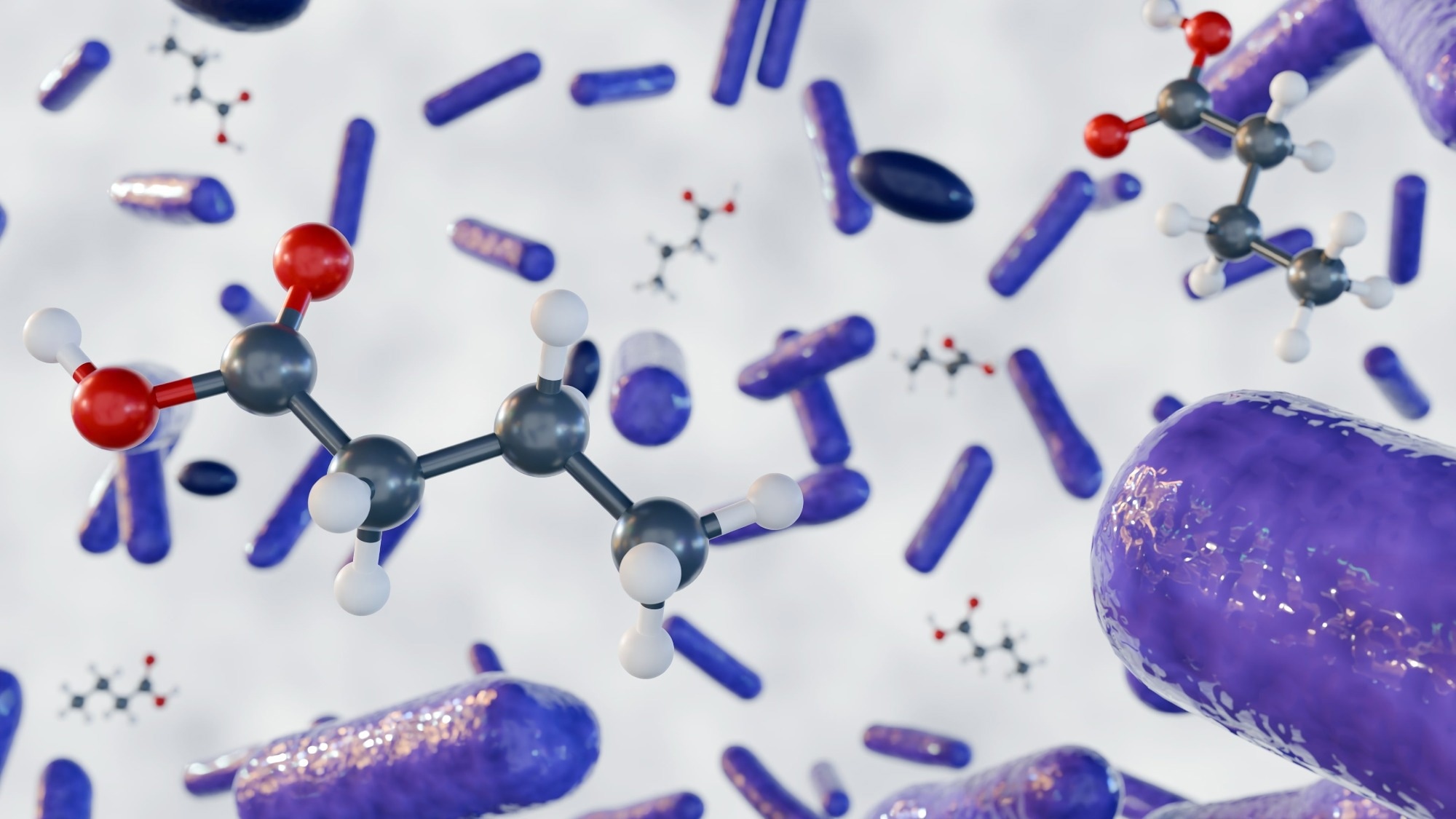These modifications increase chromatin accessibility, influencing growth, differentiation, and ion transport, with contrasting effects on normal and colorectal cancer cells.
 Study: Short-chain fatty acid metabolites propionate and butyrate are unique epigenetic regulatory elements linking diet, metabolism and gene expression. Image Credit: Love Employee/Shutterstock.com
Study: Short-chain fatty acid metabolites propionate and butyrate are unique epigenetic regulatory elements linking diet, metabolism and gene expression. Image Credit: Love Employee/Shutterstock.com
In a recent study published in Nature Metabolism, a group of researchers studied the impact of short-chain fatty acid (SCFA)-derived histone marks (propionylation and butyrylation) on chromatin accessibility and gene regulation in normal and colorectal cancer (CRC) cells and mouse intestines.
Background
Histone post-translational modifications (PTMs) mediate the interplay between metabolism and epigenetics, influencing health and disease. Beyond acetylation, short-chain lysine acylations like propionylation (Kpr) and butyrylation (Kbu) link metabolism to gene regulation via acyl-coenzyme A. (acyl-CoA) availability.
These modifications correlate with metabolic states, impacting chromatin accessibility and transcription. SCFAs, such as propionate and butyrate, derived from dietary fiber metabolism, serve as substrates for histone acylation and exhibit antiproliferative effects in cancer by altering chromatin structure.
Despite these findings, the precise mechanisms by which SCFAs regulate chromatin and gene expression remain unclear, necessitating further research to uncover their therapeutic potential.
About the study
SW480 (derived from a primary adenocarcinoma of the colon), CCD841 (a non-tumorigenic colon epithelial cell line), and CT26 (a murine colorectal carcinoma cell line) were cultured in appropriate media with supplements such as fetal bovine serum (FBS) and penicillin-streptomycin.
Cells were maintained at specific temperatures (33°C for CCD841, 37°C for others) in a humidified atmosphere containing 5% carbon dioxide (CO₂). Treatments with sodium propionate (NaPr) and sodium butyrate (NaBu) were applied in varying concentrations for 12 hours to evaluate cellular responses. All cell lines were authenticated using short tandem repeat (STR) profiling and tested for mycoplasma contamination.
Histone proteins were extracted using an acid-based method and quantified using a bicinchoninic acid (BCA) assay. Equal concentrations were resolved by polyacrylamide gel electrophoresis on gradient gels, transferred to nitrocellulose membranes, and analyzed by immunoblotting with primary and secondary antibodies.
Chemiluminescent signals were developed to identify histone modifications. Ribonucleic acid (RNA)-mediated interference experiments employed short hairpin RNAs (shRNAs) and complementary deoxyribonucleic acids (cDNAs) to target histone acetyltransferase 1 (HAT1) and study its role in acetylation.
Cell viability was assessed using a fluorescence-based assay, highlighting the differential effects of NaPr, NaBu, and trichostatin A (TSA) treatments.
Histone acid extraction and mass spectrometry revealed dose-dependent histone modifications by 13C-labeled NaPr. Chromatin immunoprecipitation sequencing (ChIP-seq), assay for transposase-accessible chromatin sequencing (ATAC-seq), and cleavage under targets and tagmentation (CUT&Tag) assays were performed to map histone modifications and chromatin accessibility.
Study results
H3K18 and H4K12 were chosen for this study due to their known association with poor outcomes in CRC. To investigate SCFA-derived modifications, CRC cells were treated with NaPr and NaBu at physiologically relevant concentrations (0-10 mM).
Using modification-specific antibodies, the presence of lysine Kpr and Kbu was detected on histones H3K18 and H4K12, with immunoblots confirming dose-dependent deposition of these marks.
Mass spectrometry analysis with isotopically labeled NaPr further validated the direct incorporation of SCFAs as propionyl-CoA and butyryl-CoA, facilitating histone acylation. Notably, histone acetyltransferase 1 (HAT1) was implicated in mediating Kpr incorporation on H4K12, as depletion of HAT1 reduced this modification.
SCFA supplementation also influenced intracellular acyl-CoA levels. Propionyl-CoA and butyryl-CoA levels increased in a dose-dependent manner, correlating with higher histone modifications, while acetyl-CoA levels remained unchanged with propionate but decreased with butyrate supplementation.
These findings suggest that SCFAs alter the cellular acyl-CoA landscape, contributing to distinct epigenetic outcomes. Functional analyses demonstrated that Kpr and Kbu increased chromatin accessibility compared to acetylation (Kac), emphasizing their roles in transcriptional regulation.
Genome-wide analysis revealed that propionate-derived H3K18pr and H4K12pr were associated with specific regulatory regions, particularly genes linked to growth, differentiation, and signaling pathways such as Transforming Growth Factor-Beta (TGF-β) and Wingless/Integrated and Beta-Catenin Signaling Pathway (Wnt/β-catenin).
Differential binding patterns highlighted distinct transcription factor motifs, including Mothers Against Decapentaplegic Homolog 2/3 (SMAD2/3) and Jun Proto-Oncogene B (JUNB).
Butyrate supplementation, on the other hand, showed enrichment in genes regulating cell motility, adhesion, and actin organization, with significant binding at oncogenic loci such as Myelocytomatosis Proto-Oncogene (MYC) and Fos Proto-Oncogene (FOS).
In normal cells, Kbu marks were linked to adherens junctions and ion transport. In contrast, in CRC cells, they were associated with mesenchymal proliferation and apoptotic signaling, reflecting the contrasting roles of SCFAs in normal versus cancerous tissue.
Integration of ChIP-seq, ATAC-seq, and RNA-seq data underscored the transcriptional impact of SCFAs, demonstrating upregulation of differentiation-related genes and suppression of cell cycle regulators.
SCFA-induced histone modifications correlated with enhanced chromatin accessibility and transcriptional activation of target genes, supporting their potential as modulators of CRC epigenetics. Mouse studies confirmed the in vivo relevance of these findings, with dietary fiber metabolism driving similar chromatin changes in intestinal tissue.
Conclusions
To summarize, SCFAs, such as propionate and butyrate, are microbiome-derived metabolites with significant epigenetic regulatory roles. Using histone post-translational modification profiling, ChIP-seq, CUT&Tag, ATAC-seq, and RNA-seq, the study identified genomic regions and pathways influenced by lysine Kpr and Kbu on histones H3 and H4 in CRC and normal cells.
SCFAs were shown to increase chromatin accessibility, regulate oncogenic pathways like Wnt/β-catenin and TGF-β, and alter the expression of genes such as MYC and FOS.
These findings suggest SCFAs directly modulate gene expression and epithelial homeostasis, highlighting their therapeutic potential in CRC prevention and treatment through dietary or microbial interventions.